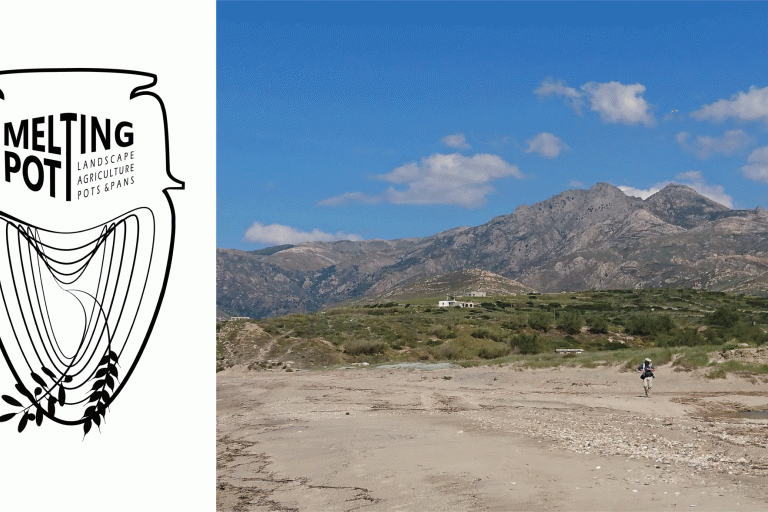Flore & Faune : étude comparative des pratiques agricoles en Grèce ancienne et dans les zones indigènes et coloniales du sud de l’Italie (env. 800-550 BC).
Direction, co-direction et tutorat : Prof. Dr. Jan Paul Crielaard, Prof. Dr. Véronique Zech-Matterne, Dr. Sjoerd Kluiving, A. Salavert.
Contact : l.godefroy@vu.nl ; lou.godfroy@edu.mnhn.fr
A la suite des « siècles obscurs » grecs (1200-800 av. J.-C.), les populations égéennes ont commencé à chercher de nouvelles opportunités. A partir de 760 av. J. -C., les Grecs ont gagné le sud de l’Italie ainsi que la Sicile. Ce phénomène, connu sous le nom de « colonisation grecque », est sujet, encore aujourd’hui, à de nombreux débats. Ainsi, l’un des points de discussion tend à savoir si les Grecs ont été contraints de migrer, en raison du manque de terres agricoles convenables, ou s’ils ont été attirés par de nouvelles opportunités. Un autre point de discussion vise à appréhender dans quelle mesure ces nouvelles colonies étaient des fondations purement grecques ou bien s’il s’agissait de joint-ventures entre Grecs et habitants locaux.
Avec notre projet NWO «What went into the melting pot? Land-use, agriculture, and craft production as indicators for the contributions of Greek migrants and local inhabitants to the so-called Greek colonization in Italy (ca. 800-550 BC) » nous souhaitons apporter, en tant que membres de la Vrije Universiteit d’Amsterdam, une contribution décisive à ce débat en utilisant majoritairement des données écologiques et environnementales, peu utilisées jusqu’alors pour les régions et la période concernées.
Les objectifs du sous-projet 2 « Flore et Faune » sont d’appréhender comment l’agriculture et l’élevage étaient organisés lors de la phase initiale des migrations grecques, de déterminer à partir de quelle base agricole préexistante les premiers colons ont opéré et d’analyser comment les stratégies de subsistance et la production excédentaire ont évolué au fil du temps. Dès lors notre attention se porte également sur l’appréhension de ces choix et stratégies afin de savoir si elles ont déterminé le développement ultérieur des colonies.
L’entreprise de l’étude archéobotanique est réalisée en coopération avec le Muséum National d’Histoire Naturelle de Paris. Les méthodes employées comprennent des analyses carpologiques et anthracologiques de sites fouillés ainsi qu’une enquête sur l’ensemble des données archéobotaniques et zooarchéologiques publiés et non publié de Grèce et du sud de l’Italie. Les données sont enrichies par une confrontation des sources textuelles et de résultats de recherches ethnoarchéologiques modernes afin de déduire et de comparer les stratégies de subsistance et la production excédentaire pendant la période de colonisation en Grèce antique et dans les zones indigènes et colonisées en Italie.
After the so-called Dark Age of Greece (1200-800 BC) had come to an end, communities in the Aegean started to look for new opportunities. From ca. 760 BC onwards Greeks settled in southern Italy and Sicily. This phenomenon, known as the Greek colonization is the subject of many ongoing debates. One point of discussion is whether Greeks were forced to migrate because of lack of suitable agricultural land or, were attracted by new opportunities. Another point of debate is to what extent these new settlements were purely Greek foundations or joint-ventures between Greeks and local inhabitants.
With our NWO-project « What went into the melting pot? Land-use, agriculture, and craft production as indicators for the contributions of Greek migrants and local inhabitants to the so-called Greek colonization in Italy (ca. 800-550 BC) » we, the team members of the Vrije Universiteit of Amsterdam, wish to make a decisive contribution to this debate by making extensive use of ecological data. To this it may be added that ecological and environmental research has a high potential for archaeology but has hardly been implemented to the period and region in question.
The aims of my particular research project ‘Flora & Fauna’ are to reconstruct how agriculture and animal husbandry were organized during the initial phase of the Greek migrations, to determine from what pre-existing agricultural basis early settlers operated and to analyse how subsistence strategies and surplus production evolved over time, but also how these choices and strategies determined the further development of colonial settlements.
This sub-project undertakes an archaeobotanical study in cooperation with the Muséum National d’Histoire Naturelle of Paris. Methods employed include carpological and anthracological analyses from a number of excavated sites along with a survey of published and unpublished archaeobotanical and zooarchaeological datasets from Greece and southern Italy. The data is enriched through the comparison of information from classical written sources and modern ethnoarchaeological investigations in order to infer and compare subsistence strategies and surplus production during the period of colonisation in ancient Greece and in the indigenous and colonial areas in Italy.



